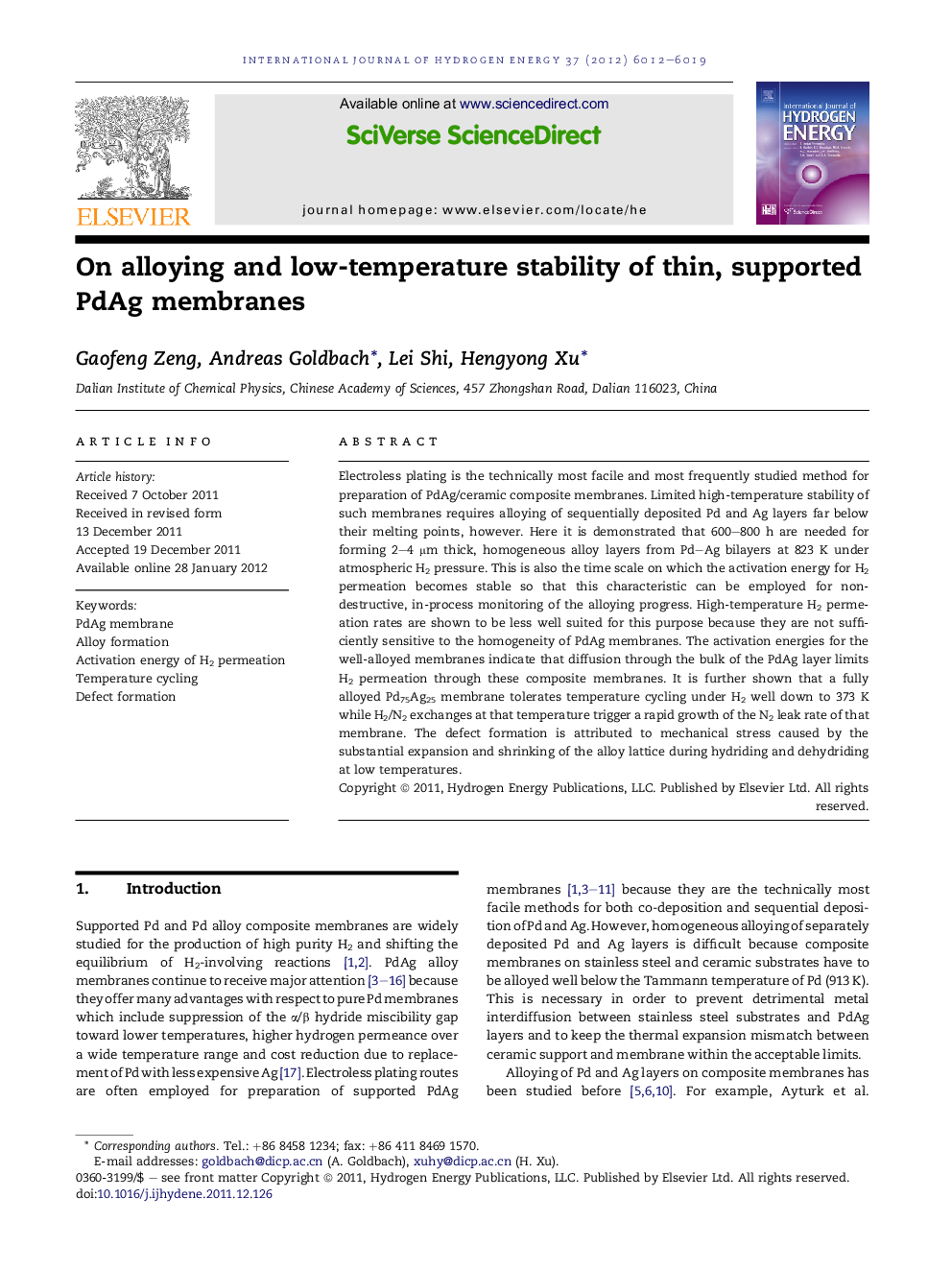| Article ID | Journal | Published Year | Pages | File Type |
|---|---|---|---|---|
| 1276893 | International Journal of Hydrogen Energy | 2012 | 8 Pages |
Electroless plating is the technically most facile and most frequently studied method for preparation of PdAg/ceramic composite membranes. Limited high-temperature stability of such membranes requires alloying of sequentially deposited Pd and Ag layers far below their melting points, however. Here it is demonstrated that 600–800 h are needed for forming 2–4 μm thick, homogeneous alloy layers from Pd–Ag bilayers at 823 K under atmospheric H2 pressure. This is also the time scale on which the activation energy for H2 permeation becomes stable so that this characteristic can be employed for non-destructive, in-process monitoring of the alloying progress. High-temperature H2 permeation rates are shown to be less well suited for this purpose because they are not sufficiently sensitive to the homogeneity of PdAg membranes. The activation energies for the well-alloyed membranes indicate that diffusion through the bulk of the PdAg layer limits H2 permeation through these composite membranes. It is further shown that a fully alloyed Pd75Ag25 membrane tolerates temperature cycling under H2 well down to 373 K while H2/N2 exchanges at that temperature trigger a rapid growth of the N2 leak rate of that membrane. The defect formation is attributed to mechanical stress caused by the substantial expansion and shrinking of the alloy lattice during hydriding and dehydriding at low temperatures.
► Alloying of 2–4 μm thick Pd-Ag bi-layers takes 600–800 h at 823 K under 100 kPa H2. ► Alloying can be monitored in process via activation energy for H2 permeation. ► Selectivity of 2–4 μm Pd75Ag25 membranes deteriorates during H2/N2 cycling at 373 K.
